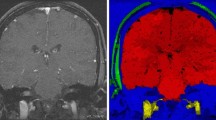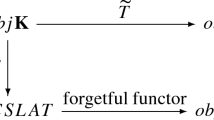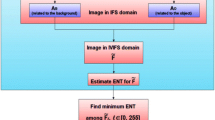Abstract
In image analysis and pattern recognition fuzzy sets play the role of a good model for segmentation and classifications tasks when the regions and the classes cannot be strictly defined. Shape analysis is of great importance for different applications of image processing, for instance in the recognition of pathological objects on X-ray or microscopic images. Pure mathematical notions like convexity and connectivity play an essential role in shape analysis. In practical image processing, the notions of convexity and connectivity as defined in any textbook in mathematics are rarely encountered, moreover it is not easy to define what exactly a convex discrete arrangement of pixels mean. Also, in real vision systems, whether machine or human, imprecisions are inherent in the spatial and intensity characterisation of the image, there are also effects of noise in sensory transduction and of limits of sampling frequency. Unlike computer systems, human beings are more flexible. In general, they can easily say whether a pattern looks convex or not, or they can specify easily the connected components on a grey-scale or a colour image. Therefore the terms approximate convexity and approximate connectivity based on fuzzy set theory have been introduced.
Access this chapter
Tax calculation will be finalised at checkout
Purchases are for personal use only
Preview
Unable to display preview. Download preview PDF.
Similar content being viewed by others
References
Bloch. I, Maître, H.,: Fuzzy mathematical morphologies: A comparative study, Pattern Recognition, vol. 28(9) (1995) 1341–1387.
Bloch, I.: Fuzzy connectivity and mathematical morphology, Pattern Recognition Letters, 14 (1993) 483–488.
Haralick, R.M. and L. G. Shapiro, Computer and robot vision, volume 1. Addison-Wesley, 1992.
Heijmans, H. J. A. M.: Morphological image operators, Academic Press, Boston 1994.
Deng, Ting-Quan, Heijmans, H. J. A. M.: Grey-scale morphology based on fuzzy logic, CWI Report PNA-R0012, Amsterdam, October 2000.
Popov, A. T.: On some properties of convexity indicators based on fuzzy morphology, SPIE Proceedings vol. 3168-Vision Geometry VI, 1996.
Popov, A. T.: Convexity indicators based on fuzzy morphology, Pattern Recognition Letters, 18(3) (1997) 259–267.
Popov, A. T.: Aproximate connectivity and mathematical morphology, J. Goutsias, L. Vincent, D. S. Bloomberg (eds), Mathematical Morohology and its Applications to Image and Signal Processing, Kluwer (2000) 149–158.
Ronse, C: Set theoretical algebraic approach to connectivity in continuous or digital spaces. Journal of Mathematical Imaging and Vision, 8 (1998) 41–58.
Rosenfeld, A.: The fuzzy geometry of image subsets. Pattern Recognition Letters, 2 (1984) 311–317.
Serra. J.: Image analysis and mathematical morphology, Academic Press, London 1982.
Serra, J.: Mathematical morphology for complete lattices. In J. Serra, editor, Image analysis and mathematical morphology, vol. 2, Academic Press, London 1988.
Serra, J.: Connectivity on complete lattices. Journal of Mathematical Imaging and Vision, 9 (1998) 231–251.
Sinha, D., Dougherty, E. R.: Fuzzification of Set Inclusion, Theory and Applications. Fuzzy Sets and Systems, 55 (1993) 15–42.
Werman M., Peleg S.: Min-max operators in texture analysis, IEEE Trans. on Pattern Analysis and Machine Intelligence, 7(2), (1985) 730–733.
Zadeh, L.: Fuzzy sets and their applications to cognitive processes. Academic Press, London, 1975.
Author information
Authors and Affiliations
Editor information
Editors and Affiliations
Rights and permissions
Copyright information
© 2001 Springer-Verlag Berlin Heidelberg
About this paper
Cite this paper
Popov, A.T. (2001). Fuzzy Convexity and Connectivity. In: Reusch, B. (eds) Computational Intelligence. Theory and Applications. Fuzzy Days 2001. Lecture Notes in Computer Science, vol 2206. Springer, Berlin, Heidelberg. https://doi.org/10.1007/3-540-45493-4_99
Download citation
DOI: https://doi.org/10.1007/3-540-45493-4_99
Published:
Publisher Name: Springer, Berlin, Heidelberg
Print ISBN: 978-3-540-42732-2
Online ISBN: 978-3-540-45493-9
eBook Packages: Springer Book Archive




